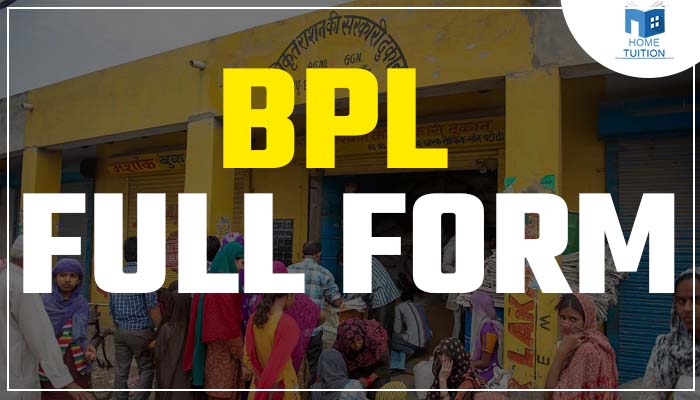Full form of BPL?
BPL stands for "Below Poverty Line." The Government of India has set this economic standard to identify lower-income people in the community who need urgent help from the government. The government has set an income limit. People whose earnings fall below the threshold are listed as BPL. According to a survey, about 30% of India's population is BPL.
History of BPL
- The task Group of the Planning Commission, 1962, suggested the minimum expenditure necessary for living as Rs. 20 per person in rural communities and Rs. 25 per person in urban areas, excluding health care and education provided by the state government.
- After the 1970s, the criterion was further modified as the lower level of BPL is a daily minimum income of Rs. 49.1 and Rs. 56.7, respectively.
- In 1993, a group of experts split the aggregate poverty line into a state-level definition, in which the poverty line was specified for each state separately.
- The poverty line rate in rural India reached Rs. 972 in 2012 and Rs. 1,407 in urban India. In that year, 29.5 percent of India's population was estimated to live below the poverty line.
- In 2014, the Rangarajan panel reported that about 454 million people live in extreme poverty, comprising 38 percent of the population.
Criteria defining BPL
- House type
- Infant status
- Consumer durables
- Food Security
- Literacy status
- Landholding
- Sanitation
- Clothes, etc.

How can Below Poverty Line be Detected?
As you know that BPL stands for Below Poverty Line, so let us take a look at how you can remove a person who is living under this economic line.
- Sanitation and Hygiene- There is a considerable lack of proper hygiene in many areas, and there is not a single washroom within a mile.
- Level of Literacy- People who do not even know how to sign their names and still use their thumbprints.
- Food, Clothing, Housing- these necessities are not met, and they live in abject poverty without getting a square meal a day.
The Tendulkar Committee and Rangarajan Committee reports are two important reports related to poverty estimation in India. In 2009, the Tendulkar Committee was formed to improve poverty estimation methods and also address previous shortcomings. The Rangarajan Committee was the result of people's outrage against the poverty estimate of the Planning Commission. It was created to study international poverty estimation techniques and select a suitable method for India.